How to clean mold from a carpet – and what experts warn you should never to do
Tackle mold head-on with expert advice on how to remove it from your carpet and stop it coming back
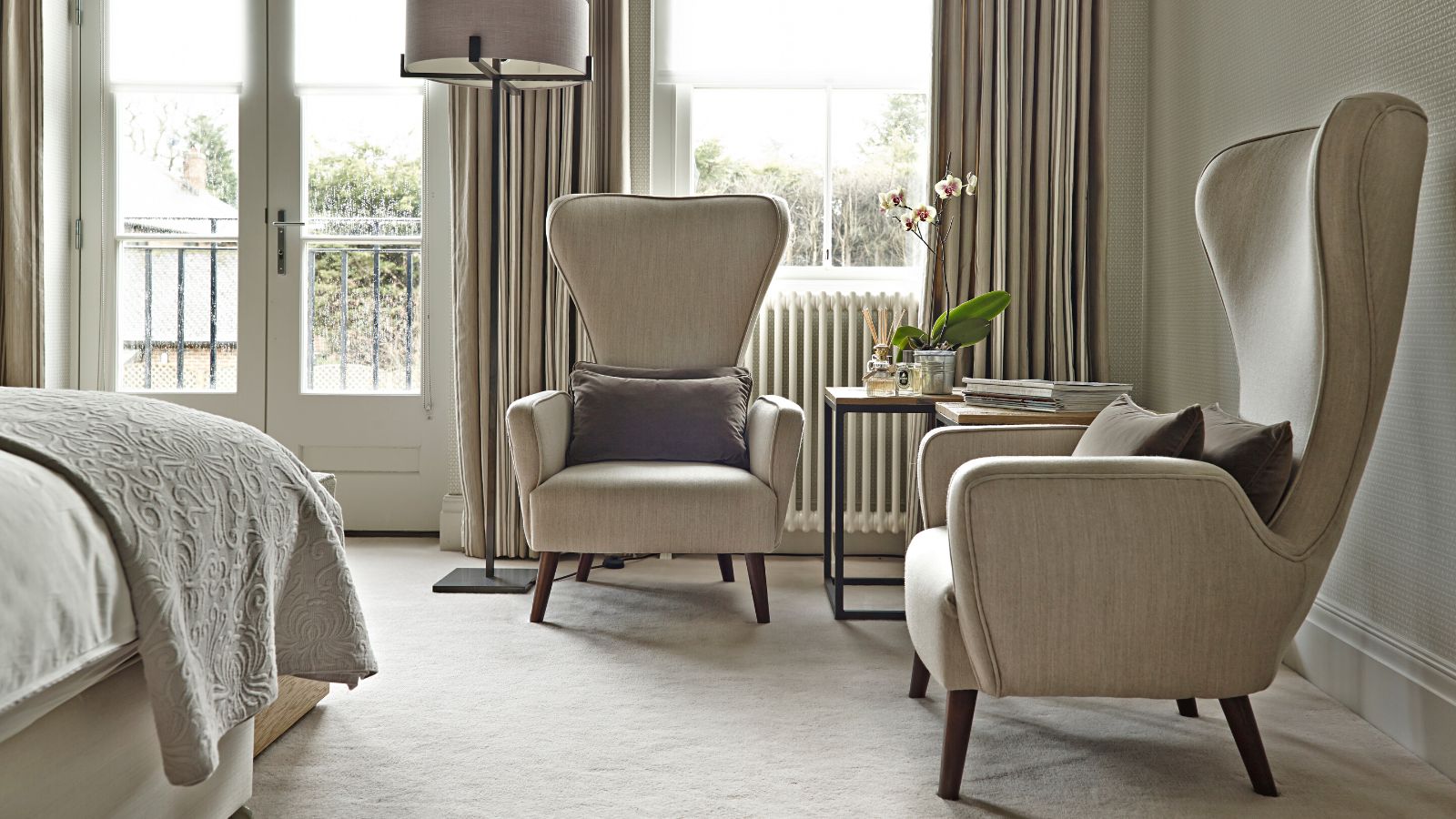
- Signs of mild
- Steps for cleaning mold from carpet
- 1. Identify and remove the source of the mold
- 2. Proper Ventilation and PPE
- 3. Apply your choice of cleaning solution
- When to call a professional
- How likely is mold to return after it’s been cleaned from a carpet?
- How can you prevent mold from reappearing on carpet?

No one wants to find mold on their carpet, but this unsightly fungus often creeps into your home unnoticed, thriving in damp, dark areas that are difficult to clean. Left unchecked, mold can spread rapidly, releasing spores that cause health problems and leaving behind a lingering musty odor.
Once mold takes hold, it doesn’t just stay on the surface. Mold will penetrate deep into carpet fibers and padding, becoming a stubborn problem that regular vacuuming simply won’t solve. In fact, without the right approach, any attempt to clean mold from a carpet can make the situation even worse.
Unfortunately, this insidious issue requires more than just a quick fix. That's why we turned to experts to learn how to deep clean a carpet contaminated with mold and, more importantly, how to keep it from coming back.
How to clean mold from a carpet
According to Hayden Whiting from Mold Medics, carpet is one of the most common places homeowners find mold because moisture, flooding, or spills can be absorbed into the carpet and get trapped underneath.
Hayden explains, ‘Think of carpets as giant filters, trapping dead skin cells, mold spores, and allergens. Despite rigorous cleaning efforts, it's challenging to completely eliminate these contaminants. Not to mention carpet cleaning services can also introduce excess moisture, which if not dried properly, can lead to mold growth in the padding and sub-floor.’
How to spot the signs of mold on carpet
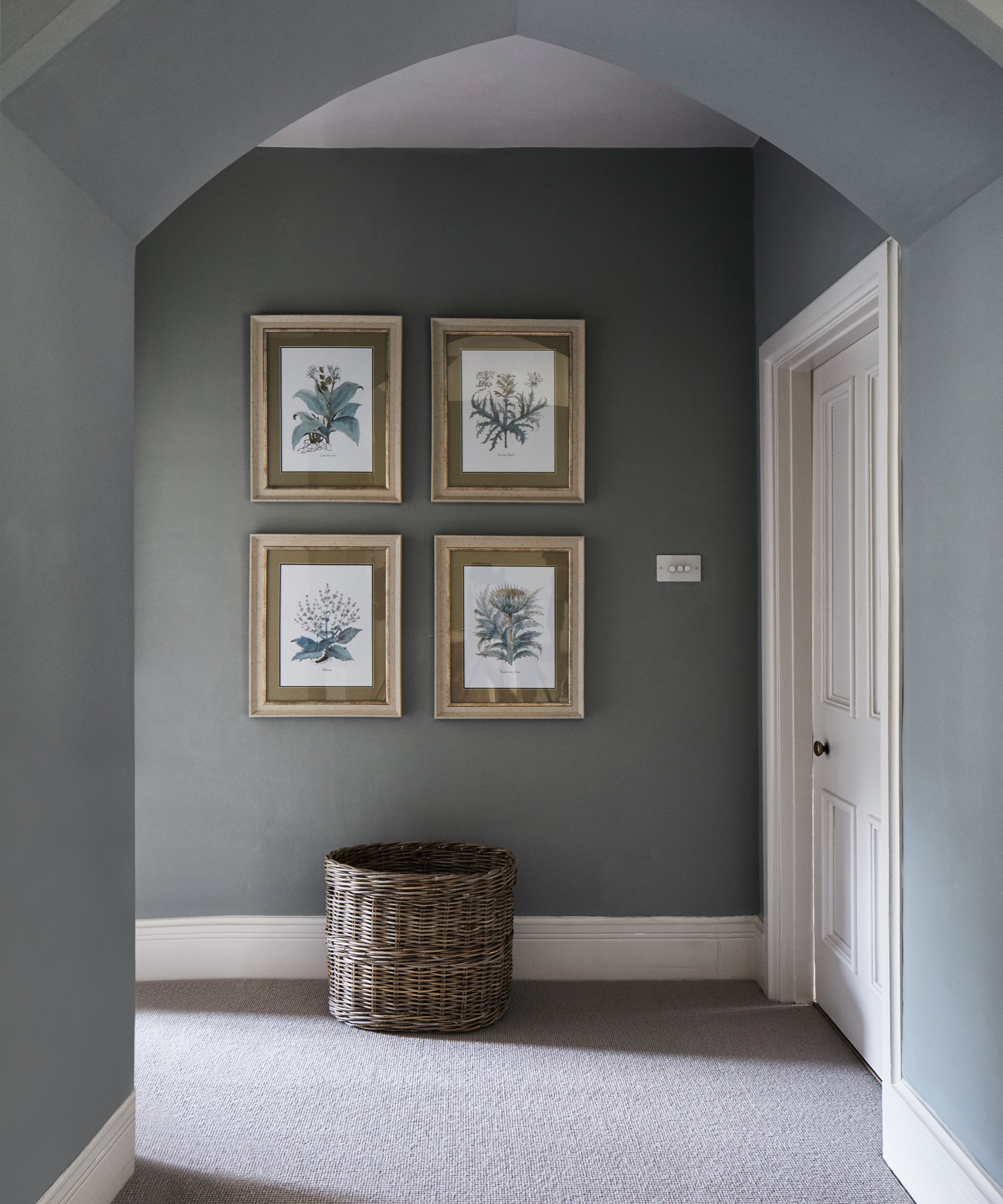
Peter Duncanson, Vice President of training and development at ServiceMaster Restore, says that homeowners should look for for subtle signs that indicate the presence of mold on a carpet, such as musty odors, discolored patches, or an unusual fuzzy texture.
To distinguish between regular carpet stains and mold growth, Duncanson suggests keeping an eye out for these specific things:
- Mold typically appears as fuzzy or powdery spots and may have a musty smell, while regular stains are usually isolated, non-fuzzy, and lack any distinctive odor.
- Mold growth often spreads irregularly and may change color or texture over time, whereas ordinary stains usually remain consistent.
- Mold typically looks like green, black, or white spots and can make the carpet feel damp or slimy.
- If you frequently experience allergy symptoms like sneezing or coughing near the stained area, it may be due to mold rather than a regular stain.
But spotting the signs of mold on carpet may not be as simple as keeping an eye out for surface-level stains. According to Taylor Riley, co-owner of Impact Cleaning Professionals, mold growth typically starts in the carpet padding rather than the exposed fibers themselves.
Riley explains, ‘The padding is more susceptible to moisture retention, creating an ideal environment for mold to thrive. Once the mold starts growing in the padding, it can spread upward into the carpet fibers. This is why mold problems often go unnoticed until the issue has become more severe, as the visible fibers may not show signs until the mold has already taken hold underneath.’
Michael Rubino, mold and air quality expert and founder of HomeCleanse, suggests looking out for areas of water damage, too. ‘Where there’s moisture, there’s an opportunity for microbial growth. Discoloration, watermarks, wrinkling, puckering, or buckling can all indicate a moisture problem.’ Try lifting up a small corner of your carpet to see if mold is growing near the water damage.
According to Rubino, ‘The only 100% accurate way to determine the difference is to test for mold on the surface, using something like a dust, swab, or tape test. They can also provide information on the species present. That said, I always say it’s better to err on the side of caution and treat the situation as though it’s microbial growth.’
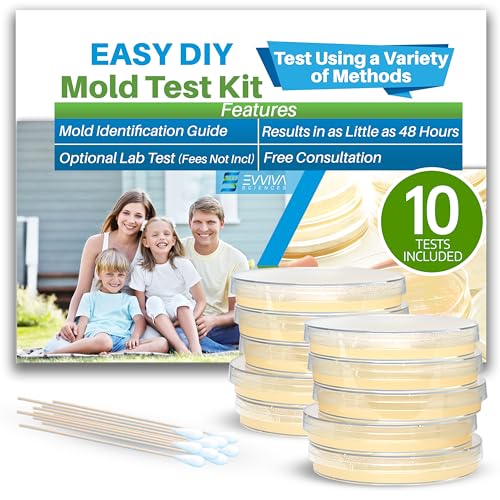
This testing contains 10 agar petri dishes, 10 cotton-tipped swabs, and a detailed mold identification guide, making the process of identifying carpet mold a breeze. You can test carpets or any room surface, along with HVAC systems and appliances. It's Amazon's Choice meaning lots of shoppers buy it, the kit is rarely returned and it's usually well-stocked and available to buy.
A step-by-step Guide to cleaning mold off a carpet
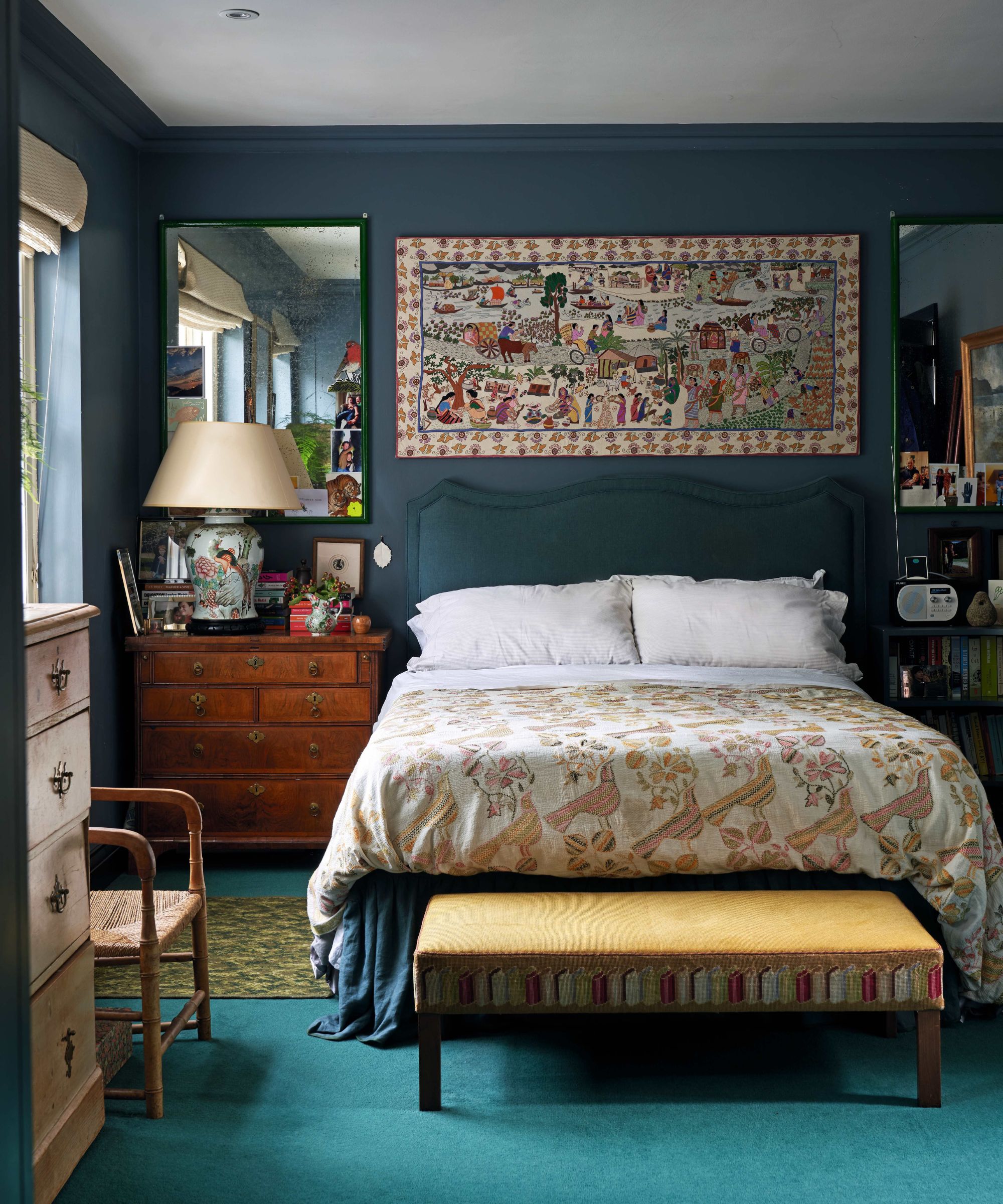
1. Identify and remove the source of the mold
Before you can even begin to clean mold off a carpet it’s essential to identify how moisture reached the carpet or carpet padding in the first place. Taylor Riley from Impact Cleaning Professionals explains, ‘Common causes include leaky pipes, flooding from spills or appliances, high humidity in poorly ventilated areas, roof leaks, or foundation issues allowing water to seep in.’
Addressing these sources is crucial. Riley says, ‘Without fixing the underlying moisture problem, any cleaning efforts may only provide temporary relief, and mold will likely return. Once the moisture source is addressed, you can begin cleaning the mold.’
For affected areas larger than 10x10 inches you will likely need to call a professional. However, for smaller contaminated patches, follow the remaining steps.
2. Proper Ventilation and PPE
Before you start the process of cleaning mold from a carpet you should allow for proper ventilation in the space by opening windows and switching on a dehumidifier or a fan. Keep in mind mold exposure can lead to serious health issues, including respiratory problems, allergic reactions, and in severe cases, toxic effects from certain mold species.
So, when cleaning mold always wear gloves and a mask or respirator. This highly reviewed three-pack of adjustable respirator masks from Walmart is an affordable choice, as are these re-useable and washable Mr Clean latex gloves from Amazon.
3. Apply your choice of cleaning solution
Never attempt to use bleach to kill mold, as this will not penetrate the fungus deeply enough. Instead, experts always recommend using vinegar to kill mold. You can apply a solution of equal parts white vinegar and water to the moldy spot, making sure it penetrates deeply.
Scrub the area with a stiff-bristle brush, then blot with a clean, dry cloth to remove excess moisture. You must not saturate the carpet during this process, as this will only create more moisture, potentially leading to further mold growth deep within the carpet fibers and padding.
Don't worry about the pungent smell of vinegar as that disappears when dry. If you really can't stand the smell of it even in the process of cleaning, opt for a scented cleaning vinegar.
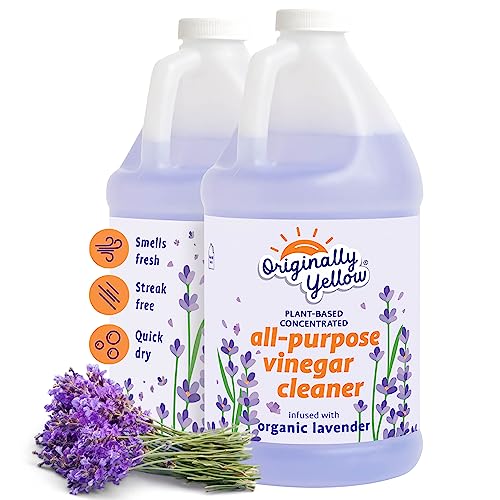
This large 64 fluid ounce bottle of scented cleaning vinegar will come in handy if you don't like the smell of natural vinegar. It's infused with organic lavender and comes available in lemon scent too. It's brilliant for all sorts of cleaning around the home.
4. Dry the carpet and padding thoroughly
It’s essential that you dry your carpet and the padding completely after cleaning, as this step is key to preventing mold from returning since mold thrives in moisture.
Using fans or one of our best dehumidifiers to help speed up this step. If you don’t feel comfortable or you aren’t convinced you are able to remove the mold using this step-by-step method, consider calling a mold removal specialist.
FAQs
When to call a professional
Most mold experts agree that the best course of action after spotting signs of mold on carpet is to hire a professional removal service to resolve the problem. This is because you need to remove all of the contamination to ensure that exposure does not continue and the growth doesn’t return. This includes the roots, mold colony, dead particles, and by-products like mycotoxins. This is extremely hard to do on a DIY basis as mold can spread deep down into the fibers of your floor, not just your carpet.
According to Hayden Whiting from Mold Medics you should ask yourself the following questions to determine if you can remove mold on your own:
1. Is the mold small, visible, and in an easily reachable centralized location?
2. Do you know what caused the mold growth, and can you address this on your own?
When it comes to porous surfaces like carpets, Hayden says this is usually best left to a professional, as proper containment is of the utmost importance to prevent cross-contamination and the mold spreading elsewhere in your home.
When hiring a company to remove mold from carpets, Michael Rubino says you should make sure these steps are checked off during the remediation process:
- Ensure proper PPE is used and in place to protect those involved in the process (masks, ventilation, etc).
- Make sure the source that led to the growth has been identified and resolved.
- All porous materials such as the the carpet, need to be removed and replaced. Consider switching to a material that is completely non-porous.
- The surrounding area should be deeply cleaned to remove any particles or spores released by the active growth or during the removal and cleaning process.
How likely is mold to return after it’s been cleaned from a carpet?
According to Michael Rubino, founder of HomeCleanse, ‘If the proper protocol is followed, the mold should not return. Mold will only grow if there’s a source of moisture and food around. If these sources are removed and all of the contamination is removed, there’s no reason for the mold to begin growing again.’
How can you prevent mold from reappearing on carpet?
To prevent mold from reappearing on a carpet, our mold experts recommend the following actions:
- Vacuum 1-2 times per week at a minimum using a HEPA vacuum.
- Hire a professional to deep clean them every six months and ensure that they will dry within 24 hours.
- Clean up spills ASAP as mold can grow in as little as 24 hours, using a botanical product such as Benefect Impact Cleaner from Amazon for any stains, and then thoroughly dry the damp area with microfiber towels.
- Install high-quality padding, which will help prevent moisture from seeping deep into the subfloor.
- Maintain humidity levels at home between 35-50%, as some species of mold can grow in high humidity.
Want to banish mold from your home for good? Discover our guide to getting rid of black mold and improve ventilation in your home where possible.
Sign up to the Homes & Gardens newsletter
Design expertise in your inbox – from inspiring decorating ideas and beautiful celebrity homes to practical gardening advice and shopping round-ups.

Gabriella is a freelance contributor for Homes & Gardens. She is a DIY enthusiast and a lover of all things interior design, often found antiquing or browsing the aisles of her local hardware store. She has a particular passion for historic buildings and is in the process of renovating a Victorian coachhouse in the countryside.
For much of the past decade, Gabriella has worked as a freelance writer, crafting copy for national publications and renowned homeware brands. Most recently, she worked for Homebuilding & Renovating Magazine and is the former Head of Solved at Homes & Gardens, focusing on case studies for the magazine and website, as well as writing features about issues surrounding historic and listed building projects.
-
 These 5 plants can help you get the best, and potentially tastiest, broccoli ever – discover what to plant with broccoli, and what to avoid
These 5 plants can help you get the best, and potentially tastiest, broccoli ever – discover what to plant with broccoli, and what to avoidOur selection of vegetables, herbs, and flowers is perfect for companion planting with broccoli
By Drew Swainston Published
-
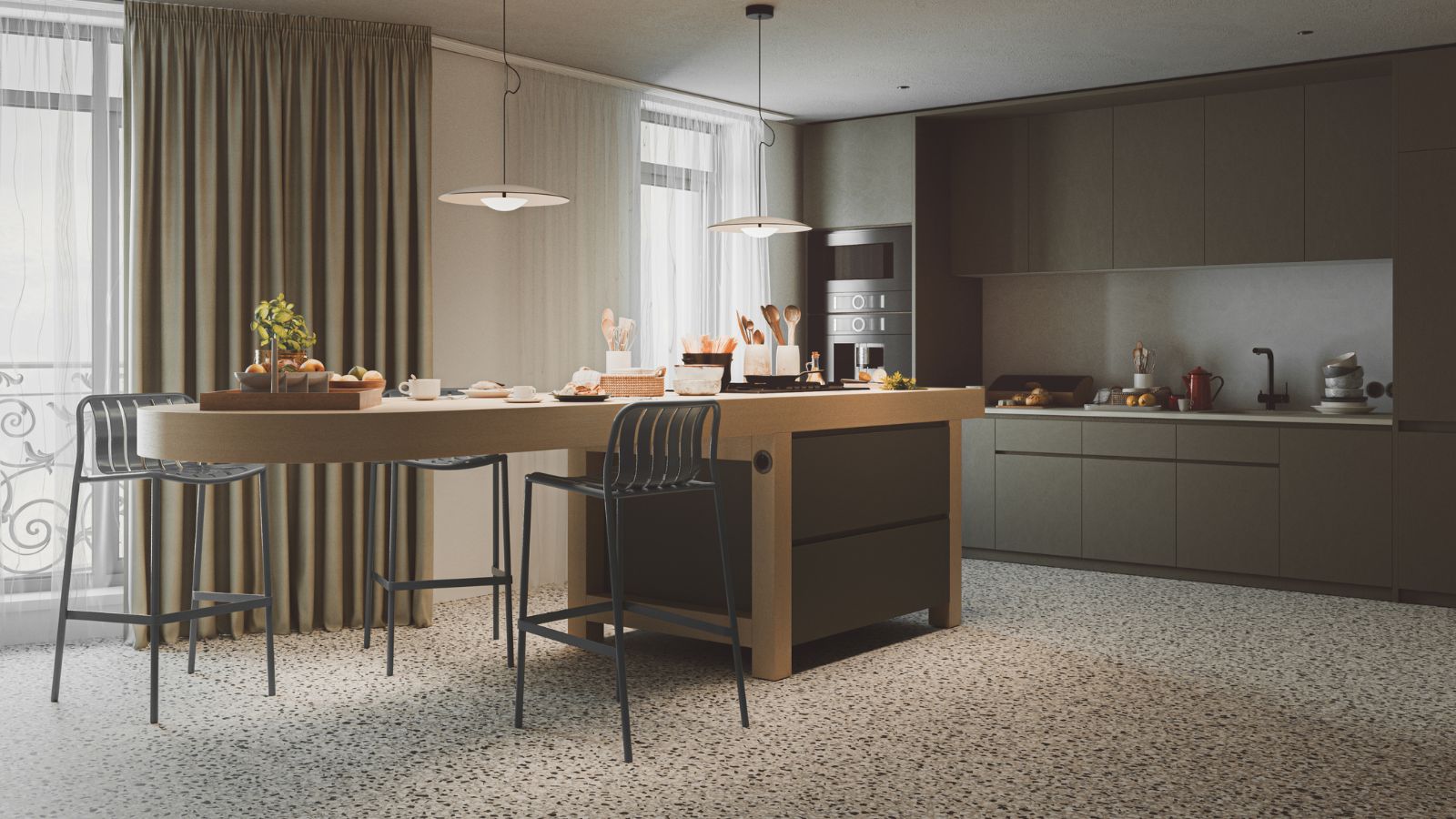 How to clean a terrazzo floor in 5 steps – expert tips to scrub, shine, and seal this sparkling floor finish
How to clean a terrazzo floor in 5 steps – expert tips to scrub, shine, and seal this sparkling floor finishAvoid damage and protect it's shine with these expert tricks
By Chiana Dickson Published
-
 How to clean a terrazzo floor in 5 steps – expert tips to scrub, shine, and seal this sparkling floor finish
How to clean a terrazzo floor in 5 steps – expert tips to scrub, shine, and seal this sparkling floor finishAvoid damage and protect it's shine with these expert tricks
By Chiana Dickson Published
-
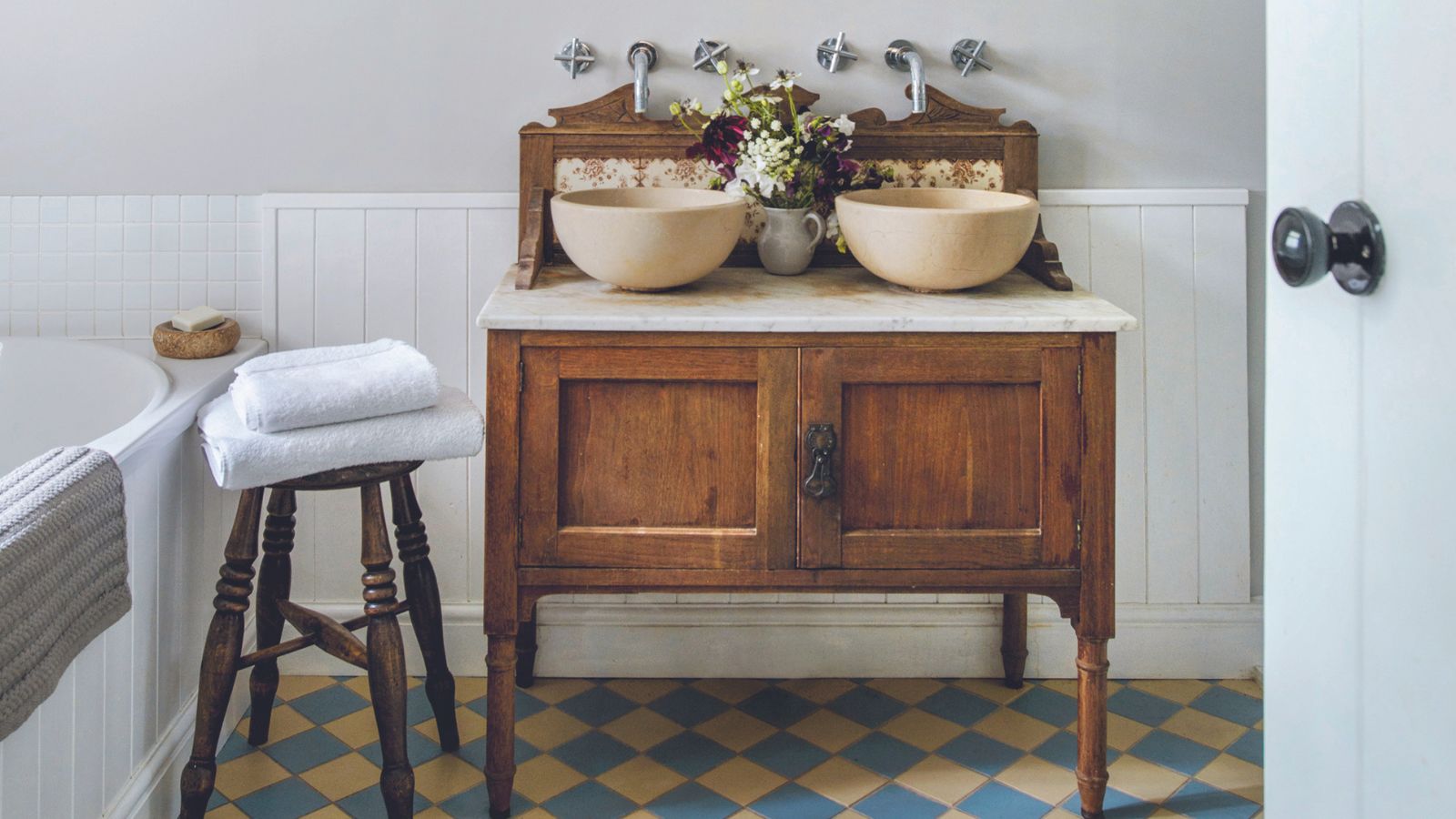 I'm 5ft2 and this telescopic scrubber safely and easily banished mold and grime in even the hardest-to-reach areas of my bathroom in less than 15 minutes
I'm 5ft2 and this telescopic scrubber safely and easily banished mold and grime in even the hardest-to-reach areas of my bathroom in less than 15 minutesMy bathroom has never looked better thanks to this handy $16 two-in-one tool from Joseph Joseph
By Ottilie Blackhall Published
-
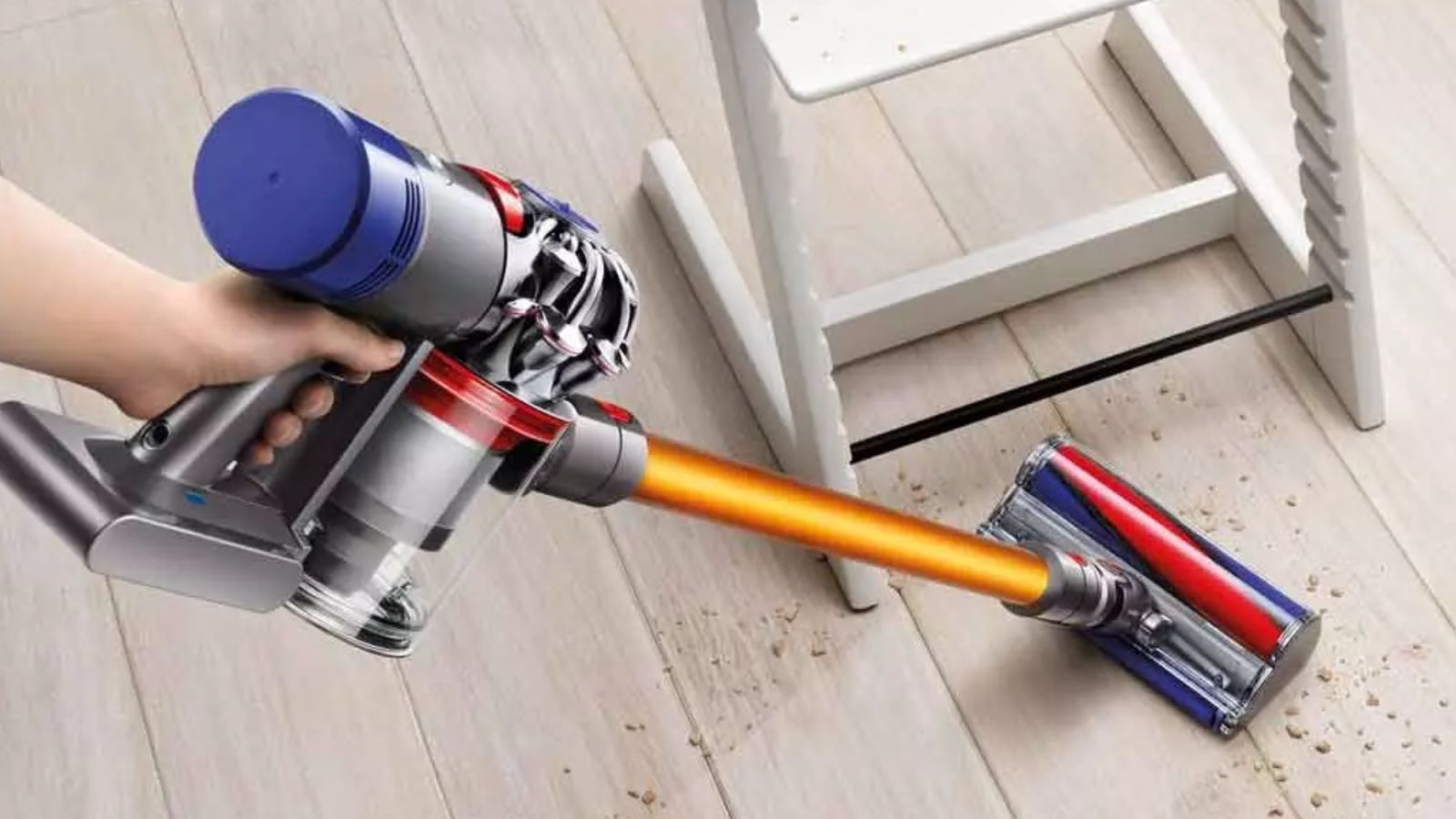 A $170 limited-time discount makes this the most affordable Dyson cordless vacuum on the market right now
A $170 limited-time discount makes this the most affordable Dyson cordless vacuum on the market right nowYears after its release, the Dyson V8 still impresses us with its features and power
By Dan Fauzi Published
-
 My Bissell pet vacuum was struggling until I cleaned the filter – here's how to do it in three quick steps
My Bissell pet vacuum was struggling until I cleaned the filter – here's how to do it in three quick stepsIt doesn't take long to restore your Bissell vacuum's suction
By Dan Fauzi Published
-
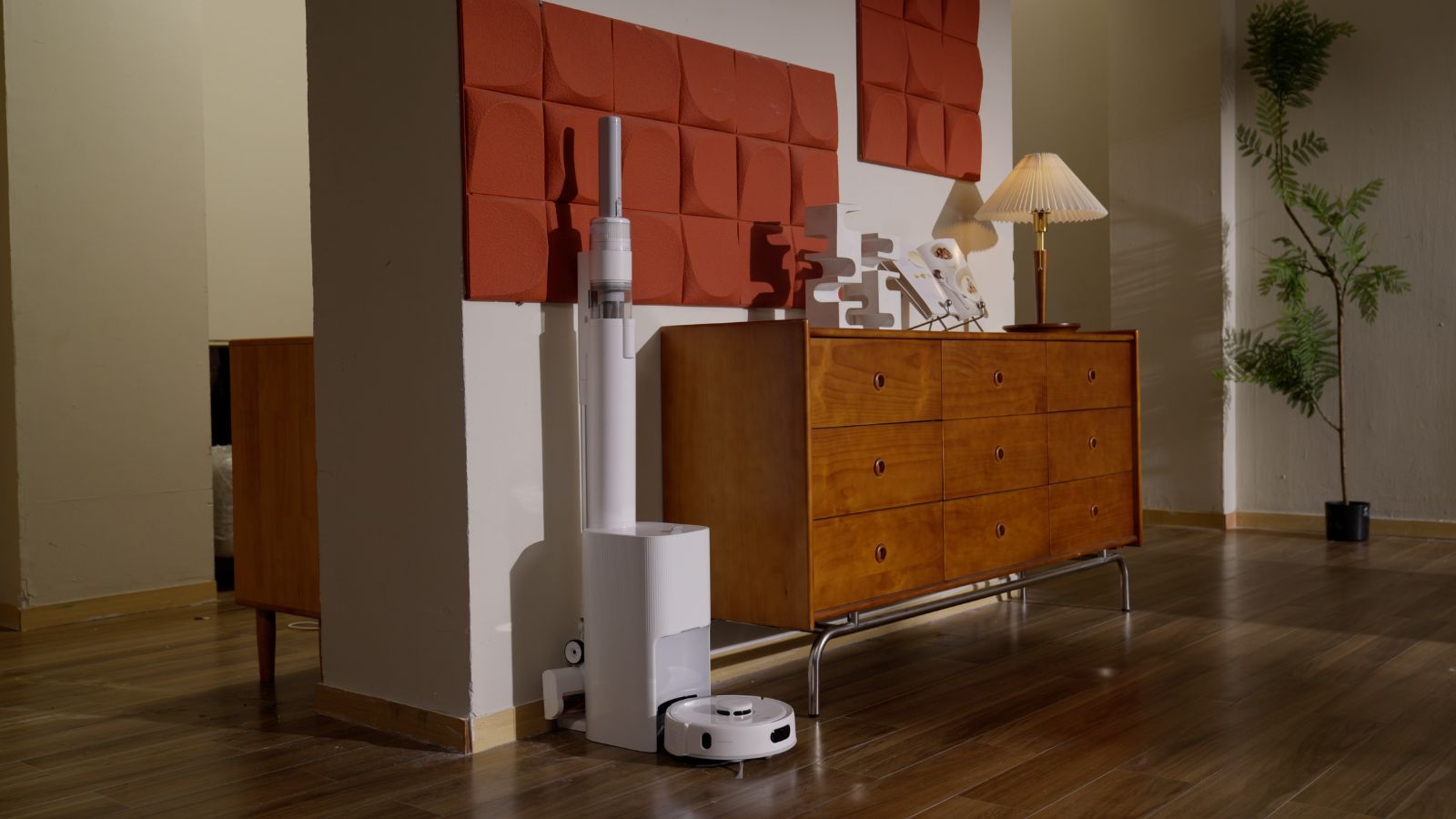 The SwitchBot K10+ Pro Robot Vacuum Combo is good for small spaces – but the mopping function falls short
The SwitchBot K10+ Pro Robot Vacuum Combo is good for small spaces – but the mopping function falls shortI tried the world's smallest robot vacuum in my busy home with 4 dogs. This is how it fared
By Ottilie Blackhall Published
-
 Pet vacuums vs. regular vacuums – what's the difference, and which do you really need?
Pet vacuums vs. regular vacuums – what's the difference, and which do you really need?As a home tech expert who has spent 200+ hours testing vacuums, here's the lowdown on special 'pet' vacuums
By Dan Fauzi Published
-
 6 essential money-saving spring cleaning hacks – save as you spruce
6 essential money-saving spring cleaning hacks – save as you spruceSpring cleaning doesn’t need to come with a hefty price tag
By Andy van Terheyden Published
-
 My mom told me this skin spray is great for stripping stubborn, sticky residue from surfaces – she was so right
My mom told me this skin spray is great for stripping stubborn, sticky residue from surfaces – she was so rightSkip frustrating scrubbing and enjoy easy removal with just one product
By Chiana Dickson Published